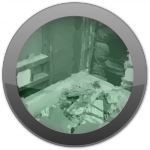Chinese Drywall

What You Need to Know
Chinese drywall was installed primarily in residential structures mostly in the south and parts of the western USA but commercial applications did occur
Has a distinctive odor similar to a burnt match smell
Most, if not all, Chinese drywall has been ½” in thickness
Will corrode copper, silver, aluminum, chrome, and some stainless steel but no galvanized metals
What You Need to Do
Conduct visual and/or X-Ray Fluorescence (XRF) testing to confirm presence
Remove drywall that is causing problems
Consideration should be given to removing any impacted metals and/or cleaning of porous materials
Myths and Misconceptions
Rotten egg odors are indicative of the presence of Chinese drywall-FALSE
Health complaints have been confirmed with exposure to Chinese drywall gases-FALSE
Air testing is a good diagnostic tool to confirm the presence of Chinese drywall-FALSE
Expert Services:
Commercial Property
Due Diligence
- Site Investigations/Inspections
- Cause of Loss Identification
- Regulatory Review
- Recommendations for Regulatory Compliance and Liability Protection
- Emergency Response
Project Scope Development: New Construction, Renovation/Demolition
- Creative Scope of Work Development
- Liability Minimization
- Project Oversight
- Environmental Sampling
- Client Interface
Emergency Response
- Inspections/Moisture Mapping/Material Impacts
- Environmental Sampling
- Exposure Evaluation/Health Risk Consulting
- Contractor Coordination
- Media Interface
Operations and Maintenance
Expert Testimony
- Environmental Risk
- Employee/Occupant Health Risk
Education and Training
- Risk Management Environmental Toolkits
- Operations and Maintenance Programs
- Competency Based Education Programs
- Water Intrusion Plans
- Hazard Assessment Critical Control Point (HACCP) Programs
- White Paper Development
Webinars/Seminars- Managing Risk and Liability
- Asbestos
- Lead Based Paint
- Mold and Water Intrusion
- Wildfire Impact
- Legionella
- Bedbugs
- Vapor Intrusion
- Indoor Air Quality
- Norovirus
Commercial Property Risk Alert Service
- Emerging Environmental Risk Information and Recommendations
- Emerging Health Risk Exposure Information and Recommendations

